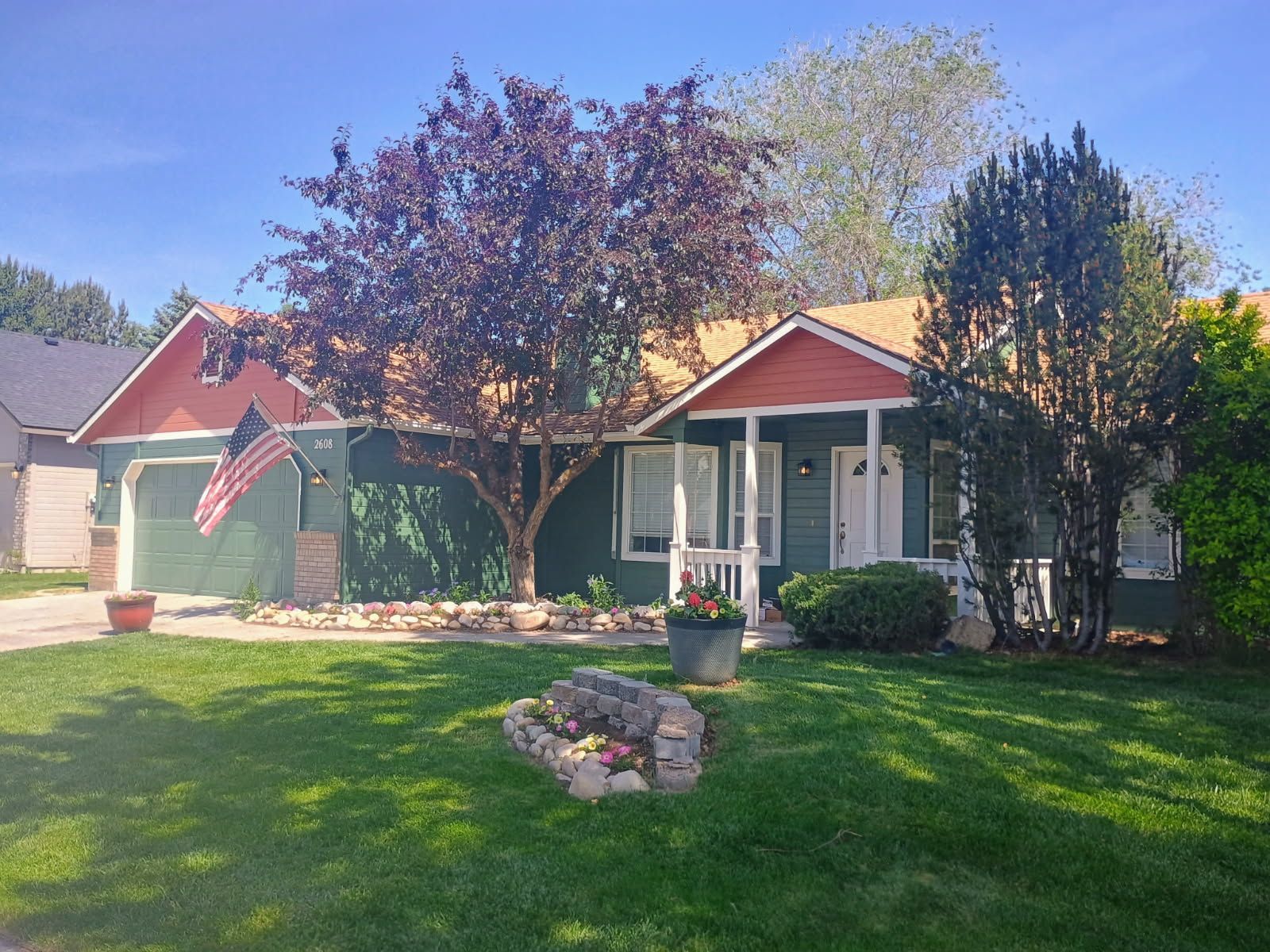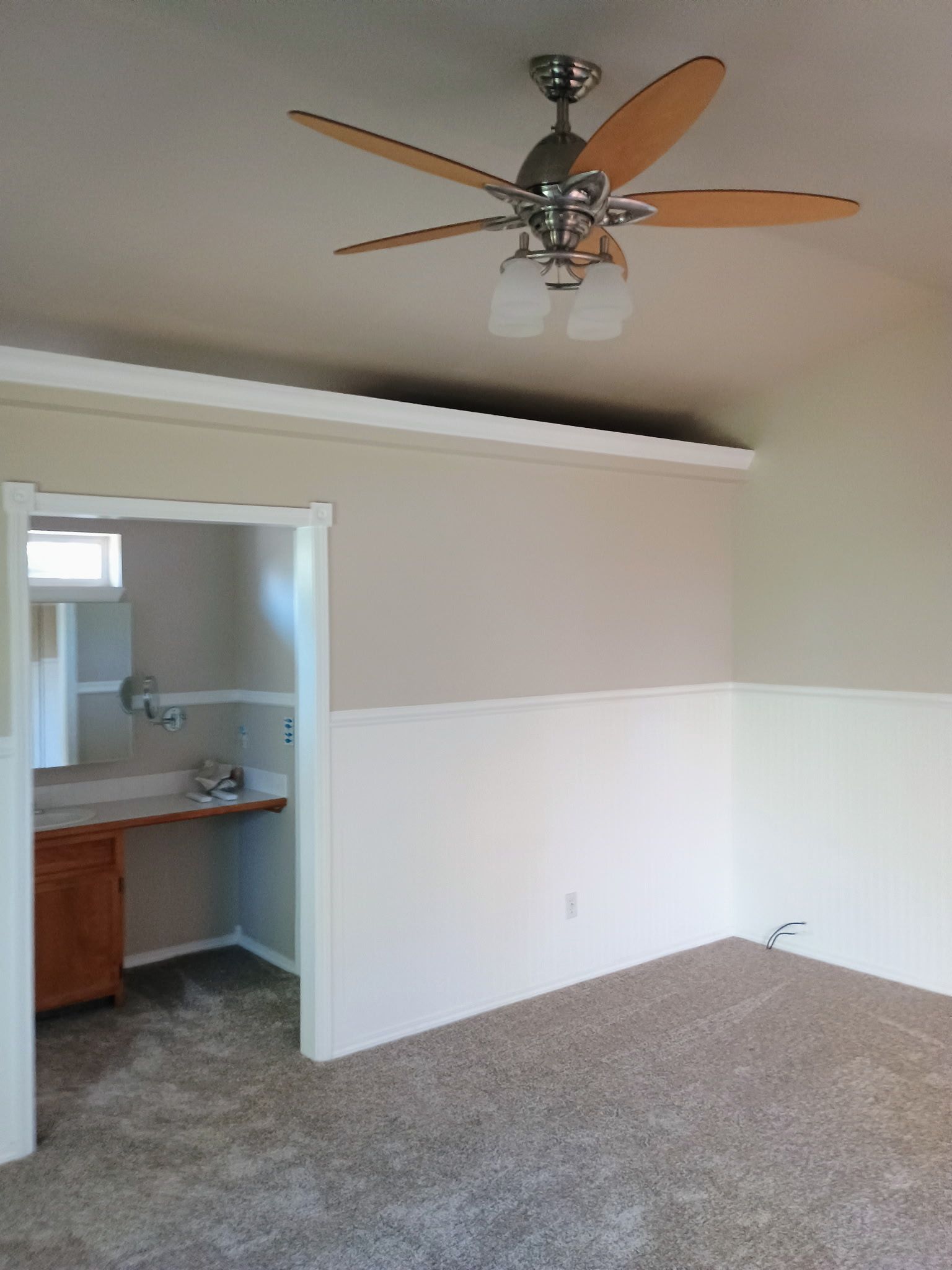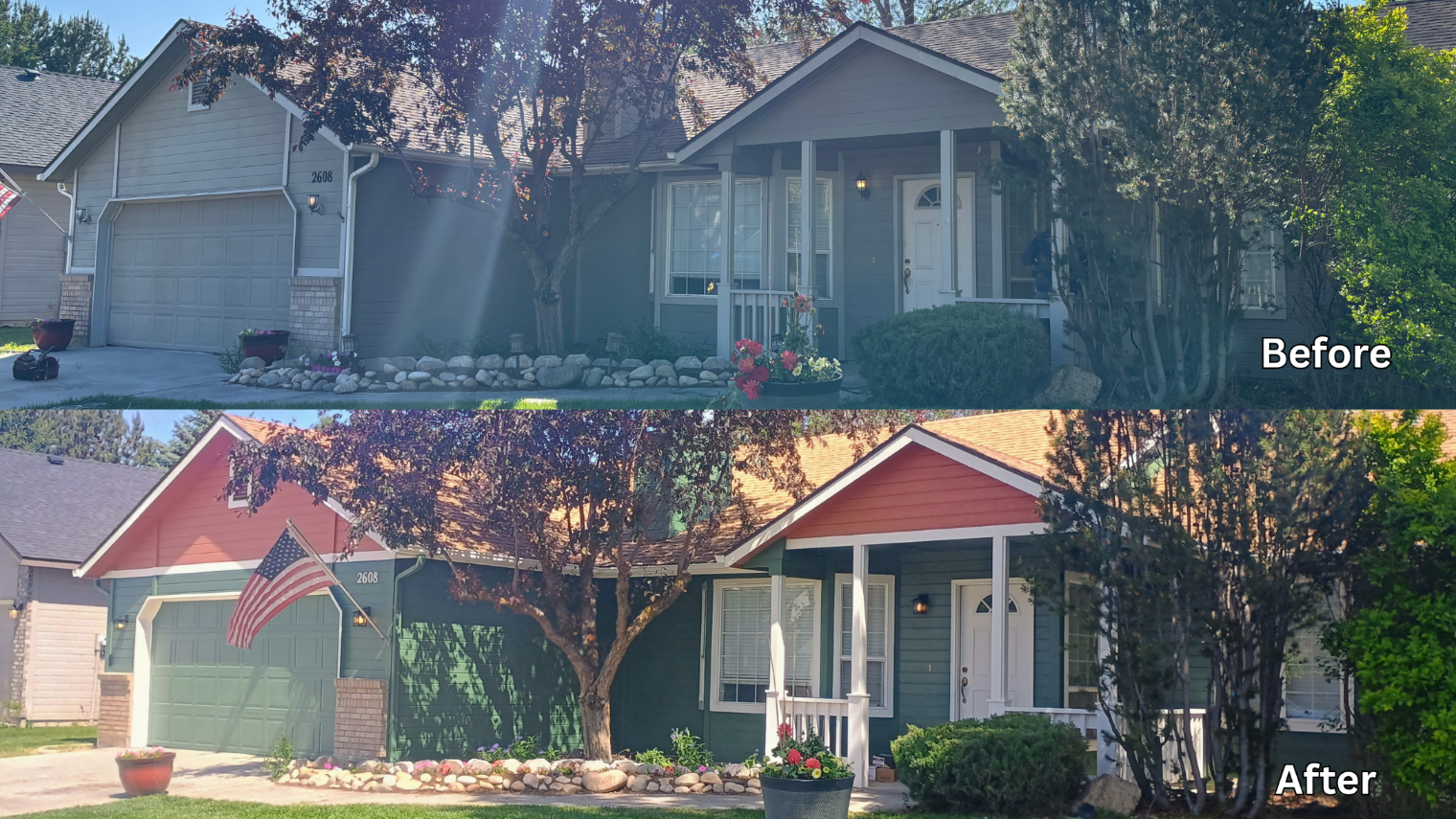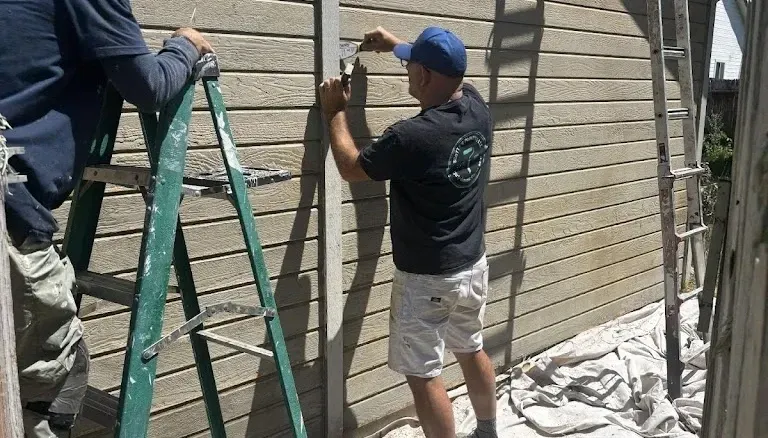
Year-Round Exterior Paint Maintenance: Protect Your Home's Curb Appeal
Most homeowners ignore exterior paint maintenance until stains or damage become impossible to miss. Dirt, mold, and mildew quietly eat away at your paint's integrity, dulling your home curb appeal without warning. This post reveals simple cleaning exterior paint tips
you can use year-round to keep your home looking fresh and protect your investment before problems start.
Practical Cleaning Techniques

Your home's exterior paint works hard every day, facing sun, rain, wind, and all sorts of airborne grime. Regular cleaning doesn't just make your house look better—it makes your paint last longer and saves you money.
Effective Cleaning Methods
The right cleaning method can make the difference between paint that lasts 5 years and paint that lasts 15 years. Start with a simple garden hose wash-down every 3-4 months to prevent dirt buildup. This quick 20-minute task stops grime from becoming stubborn stains.
For a deeper clean, mix 1 cup of mild dish soap with 1 gallon of water. Using a soft-bristled brush on an extension pole, work from bottom to top in small sections. Why bottom to top? This prevents streaking and gives you better control over the cleaning solution. Rinse thoroughly as you go to avoid soap residue that can damage paint over time.
Power washing can be effective but risky. If you choose this method, keep the pressure below 1,500 PSI and stand at least 3 feet away from the surface. Many pros recommend avoiding power washers completely on older homes or delicate paint jobs. Instead, try a garden sprayer filled with cleaning solution for more control and less risk of paint damage.
Remember to clean your gutters and downspouts too—water overflow from clogged gutters is a top cause of paint failure along foundations and siding.
Eco-Friendly Solutions
Chemical cleaners might seem powerful, but they often do more harm than good. They can fade your paint, kill plants, and wash harmful substances into waterways. Natural cleaning solutions work just as well without the risks.
A mixture of 1 part white vinegar to 3 parts water makes an excellent mold and mildew fighter. For extra cleaning power, warm the solution slightly before applying. Spray it on problem areas, let it sit for 15 minutes, then scrub gently with a soft brush. This mixture kills mold spores without harming your paint or nearby plants.
Baking soda paste (3 parts baking soda, 1 part water) works wonders on stubborn spots. Apply it with a damp cloth, let it sit for 10 minutes, then wipe clean. The mild abrasive action removes dirt without scratching your paint.
For grease spots near outdoor grills or kitchen vents, try a paste made from 1 cup of cornstarch mixed with water. Apply, let dry completely, then brush away. The cornstarch absorbs the grease without harsh scrubbing that could damage your paint.
These natural solutions aren't just better for the environment—they're gentler on your paint, helping it maintain its color and protective qualities longer. Exterior paint maintenance becomes simpler when you work with nature, not against it.
Seasonal Cleaning Routines

Different seasons bring different challenges to your home's exterior paint. Creating a year-round cleaning schedule helps you stay ahead of problems before they become expensive fixes.
Timing Your Cleaning Efforts
Smart timing turns paint maintenance from a big weekend project into small, manageable tasks. Spring cleaning should focus on removing winter's salt residue and checking for moisture damage. Clean your home's exterior in mid-morning when dew has dried but before the hot afternoon sun can dry cleaning solutions too quickly.
Summer calls for light maintenance—a gentle hose rinse every 3-4 weeks prevents pollen, bird droppings, and insect residue from baking onto surfaces. Pay special attention to areas under eaves where insects build nests.
Fall demands prompt attention to leaf stains and sap. Clean these within a week of appearance—the longer they sit, the harder they become to remove. Set a reminder to clean after the first frost when trees drop their final leaves.
Winter cleaning varies by region. In mild climates, a monthly rinse prevents salt air damage. In colder areas, focus on spot-cleaning only when temperatures rise above 50°F. Never wash exteriors when freezing temperatures might turn water to ice on your siding.
The 15-minute rule works well: spend just 15 minutes each month on targeted cleaning rather than hours once a year. This approach catches problems early when they're still easy to fix.
Adapting to Local Conditions
Your neighborhood's unique conditions demand a customized approach to paint care. Homes near busy roads collect more exhaust residue and need more frequent cleaning—every 2-3 months rather than twice yearly.
Coastal homes face salt spray that can eat through paint in months if left untreated. If you live within 5 miles of the ocean, rinse your home's exterior with fresh water monthly. This simple step removes corrosive salt before it can damage your paint's protective qualities.
Wooded areas create different challenges—shade promotes mold growth while trees drop sap and pollen. Homes in these settings benefit from a mildewcide added to cleaning solutions. Mix 1 cup of borax per gallon of your regular cleaning solution to prevent mold from returning.
Desert homes battle sand and sun damage. Use a soft brush attachment on your garden hose to remove abrasive sand particles before they can scratch paint during high winds. Apply a UV-protective clear coat every 2-3 years to prevent color fading.
Track your local weather patterns and note when your home gets the most exposure to sun, rain, or wind. This helps you create a maintenance schedule that addresses your specific challenges before they cause permanent damage.
Tackling Common Challenges

Even with regular cleaning, some paint issues require special attention. Knowing how to address these problems quickly can save your paint job and your budget.
Handling Stubborn Paint Stains
Some stains seem to laugh at regular cleaning methods. For rust stains (often found below metal fixtures), make a paste using 1 tablespoon of oxalic acid crystals mixed with 2 tablespoons of water. Apply with a soft cloth, wait 5 minutes, then rinse thoroughly. Always wear gloves and eye protection when working with oxalic acid.
Tree sap demands immediate action. Dampen a cloth with rubbing alcohol and hold it against the sap for 30 seconds to soften it. Gently wipe away, taking care not to scrub hard enough to remove paint. For older, hardened sap, try a commercial product designed for car finishes.
Bird droppings contain acids that can etch paint permanently if left too long. Remove them as soon as possible with a garden hose spray. For dried droppings, soak with a wet cloth for 5 minutes to soften before gently wiping away.
Algae streaks often appear on north-facing walls. Mix 1 part oxygen bleach (not chlorine bleach) with 3 parts water. Spray on, let sit for 15 minutes, then rinse thoroughly. Unlike chlorine bleach, oxygen bleach won't harm plants below or fade your paint color.
Water stains from sprinklers or roof runoff create mineral deposits that regular cleaning can't touch. Try a solution of 1 cup white vinegar mixed with 2 cups water, applied with a spray bottle and wiped clean after 10 minutes.
Remember that gentle persistence beats aggressive scrubbing every time. Multiple light treatments cause less damage than one harsh scrubbing session.
Knowing When to Repaint
Even perfect maintenance won't make paint last forever. Recognizing the signs that it's time for fresh paint can prevent more expensive repairs later. Check for chalking—rub your hand on the paint and look for powdery residue. This indicates the paint is breaking down and no longer protecting your home.
Cracking that goes beyond the surface paint into the wood or siding beneath means water may be getting into your home's structure. This requires immediate attention and likely means it's time for a complete exterior painting project.
Most quality exterior paint jobs last 7-10 years, but this varies widely based on your climate and previous paint quality. Southern and western exposures typically show wear 2-3 years before northern walls due to increased sun exposure.
Paint technology improves constantly. Today's paints offer better protection and longer life than products from even 5 years ago. If your home was last painted more than 8 years ago, new paint might provide better protection against moisture and UV damage.
Watch for fading color, especially on south-facing walls. When cleaning no longer restores the original color, the paint has likely reached the end of its protective life. Small touch-ups can buy you time, but they won't match exactly and may look patchy.
If you're spending more than a weekend each year maintaining your paint, it might be more cost-effective to invest in new paint with modern protective qualities. Contact a professional painter for an assessment of your home's current paint condition and recommendations for long-term protection.
Regular maintenance extends paint life significantly, but recognizing when it's time for fresh paint saves money on potential structural repairs. Quality paint isn't just about looks—it's your home's first line of defense against weather damage.
By following these seasonal cleaning routines and addressing problems early, you'll maintain your home's curb appeal while protecting your investment for years to come.











